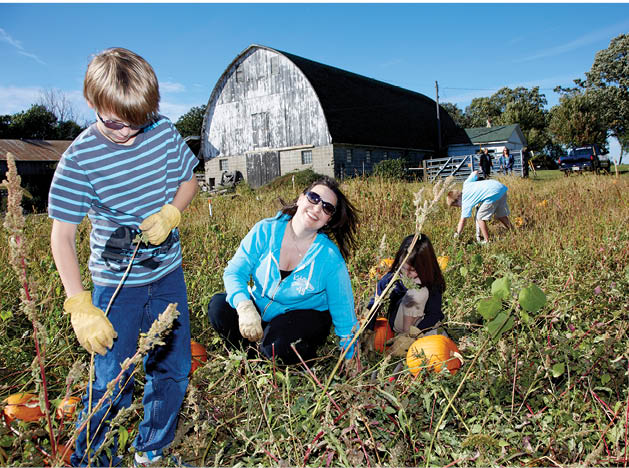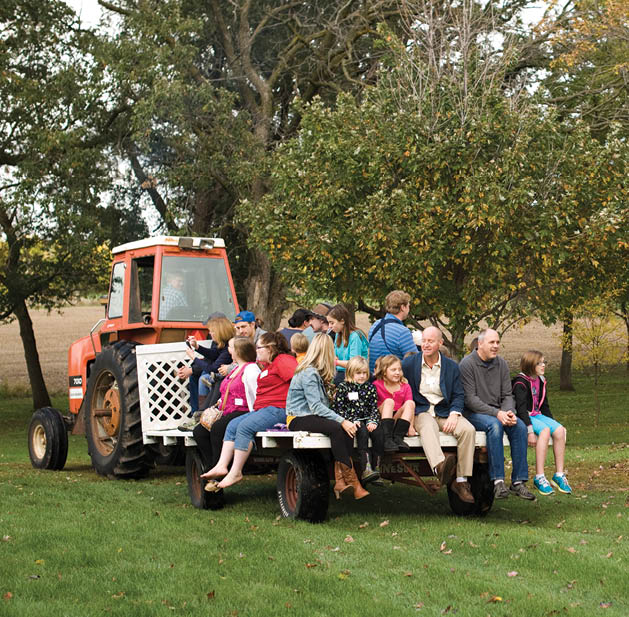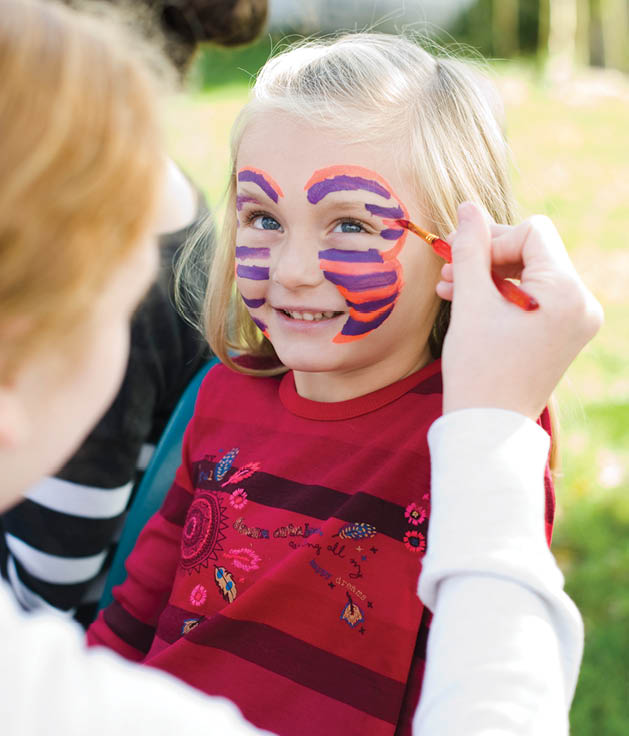At the southwest corner of Bailey Road and Woodbury Drive, Resurrection Lutheran Church sits on a picturesque parcel of land, once the Oehlke farm. Each summer, a plot of land near the original farmhouse is transformed by church members into a bountiful pumpkin patch, yielding around 500 pumpkins. “It used to be a cow pasture, so the land is very fertile,” says Inez Oehlke, who owned the land with her husband, Glen. “[Resurrection] is using it for a very good purpose, and you know, I’m really thrilled.”
The idea for Resurrection’s pumpkin patch sprouted from Jay Arrowsmith Decoux, former director of youth ministries, who lived in the farmhouse behind the church. Decoux says, “We were so blessed to have that land given to us for our own use that it seemed like a waste not to use it. The pumpkin patch was started in 2007 to get the kids involved in something new and [to] raise money for the youth group.”
That first year, pumpkins weren’t planted until late June and there was an early frost, resulting in green pumpkins. “We sold them as Packer pumpkins,” Decoux says with a laugh. Decoux moved on to other opportunities, but the pumpkin patch at Resurrection continued to grow, with the church adding a community harvest festival as well, thanks to the leadership of Janice Jorenby, Renae Jensen, Jodi Miller and Scott Hanson, who coordinate the March-through-October effort, assisted by dozens of church members.
“This farmstead is one of the oldest places in Woodbury, and it’s special that Inez donated it to Resurrection,” says Jodi Miller, pumpkin patch coordinator. “That generous spirit inspires me, and it lives on with the pumpkin patch. God has given us so much, and we can share with others.”
“Our harvest festival is a celebration of who we are—a vibrant, enthusiastic congregation,” says Pastor John Keller. “We invite the community to come get their pumpkins at Resurrection and enjoy good music, food and fellowship.”



Seeding and Planting
Pumpkins are started indoors from seedlings and then transplanted into the pumpkin patch. Resurrection Lutheran Church holds a seed-starting party each spring, when families take seeds to cultivate at home. Following preparation of the field, the seeds are transplanted by hand into 16 rows, each about 100 feet long.
Some families adopt a row in the pumpkin patch; one row—Gary’s Row—is dedicated to Gary Bailey, an avid gardener and pumpkin patch volunteer who passed away. Pumpkins from Gary’s Row are donated to the Christian Cupboard Emergency Food Shelf and a women’s shelter, along with other vegetables that are planted in 6-foot squares near the pumpkin patch.

Weeding and Watering
Starting in late June through August, volunteers from Resurrection Lutheran Church work in the pumpkin patch to keep weeds away from the stems and roots. An extensive network of soaker hoses, designed by Scott Hanson, uses water from the original farm well to keep the field irrigated. Flowers are also planted in the field to increase pollination.

Harvest
About a month before the harvest festival, irrigation is stopped to allow the pumpkin vines to harden up so they’re nice and strong. The week before the festival, the pumpkins are cut off the vines; stems are trimmed and the pumpkins are cleaned.


Pumpkins
There are different varieties of pumpkins in the pumpkin patch, including Connecticut Field, Cinderella, Jack Be Little and Early Sweet Sugar Pie. They are of various sizes; some grow faster than others.



Harvest Festival
In 2010, Resurrection Lutheran Church decided to celebrate the bountiful pumpkin harvest with the first harvest festival, which has grown into an annual event. Open to the public, pumpkin lovers can pick their own pumpkins; enjoy a hayride, games, live music and food; and pick up homemade treats at a bake sale. Free will donations go to further the church’s programs.
Resurrection Lutheran Church Harvest Festival
October 5, 2014
11:30 a.m.–2 p.m.
9925 Bailey Road
651.730.1000









